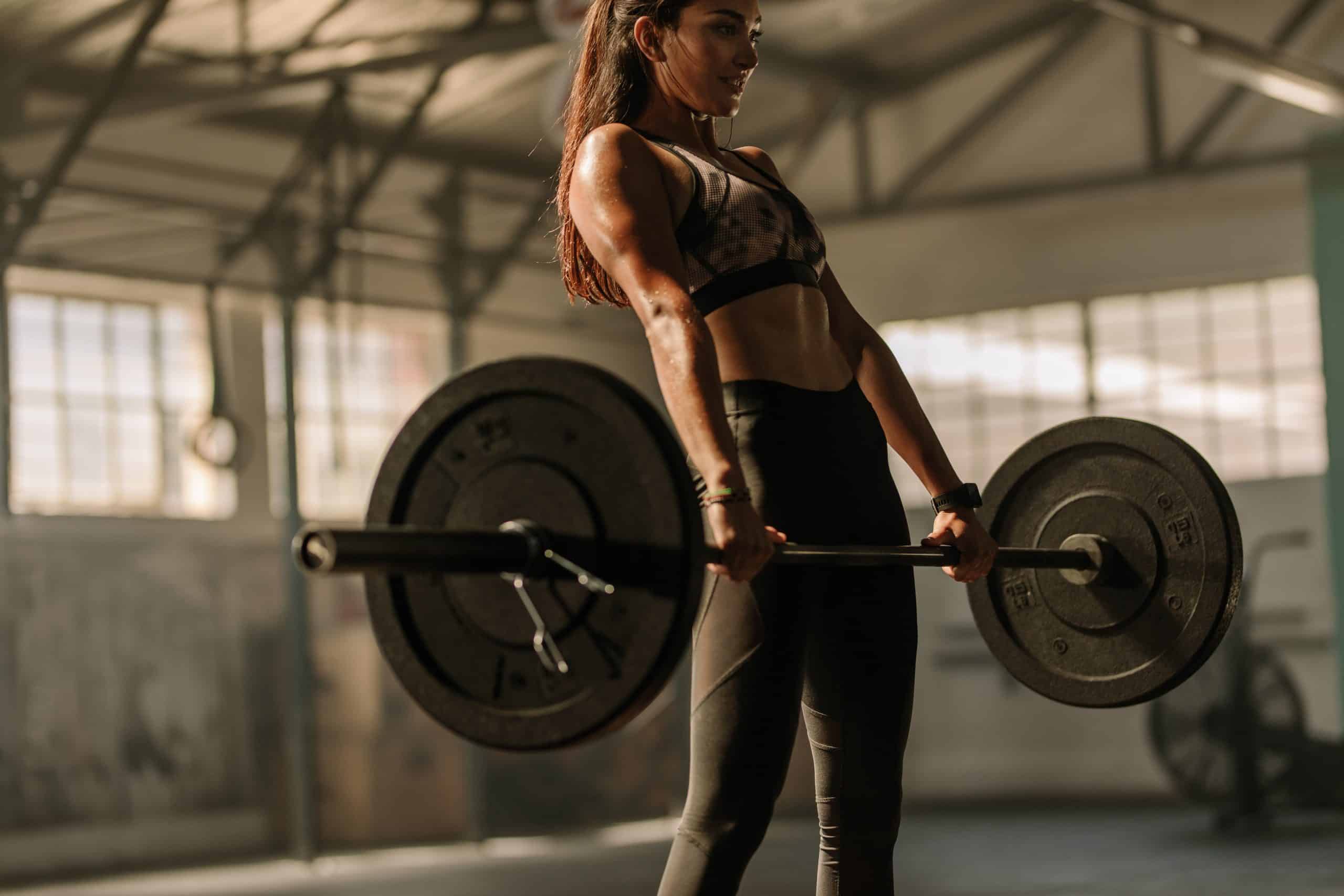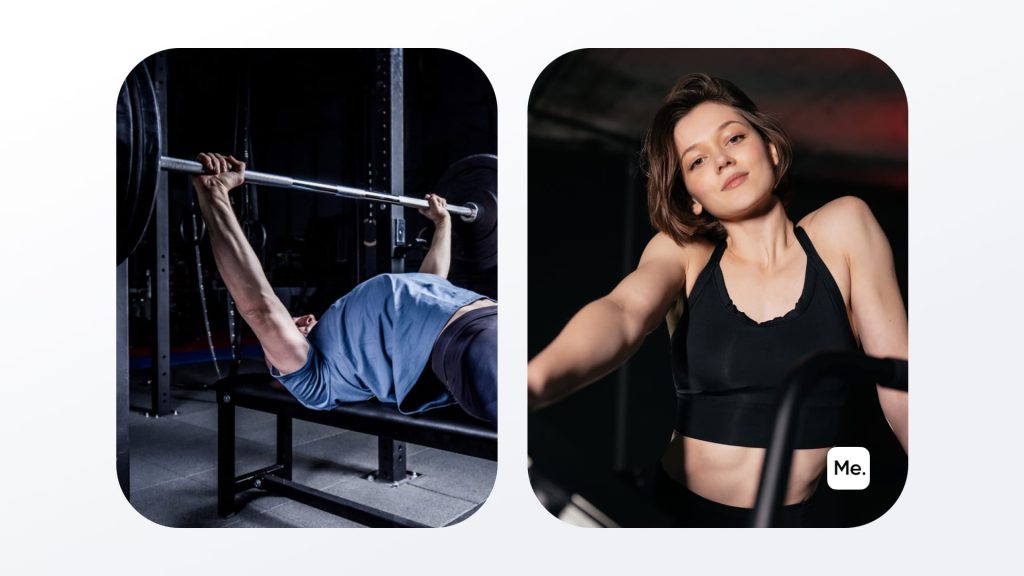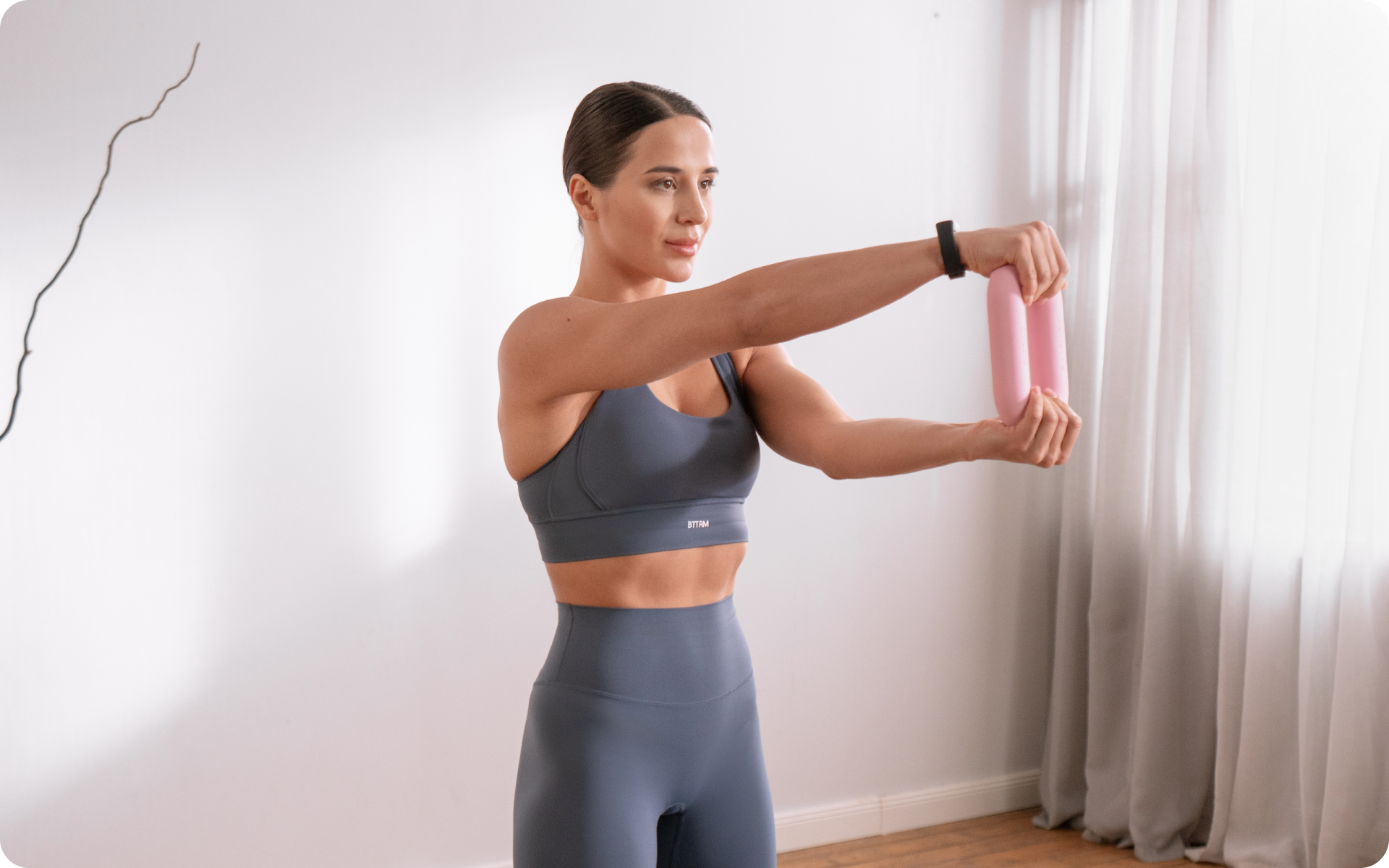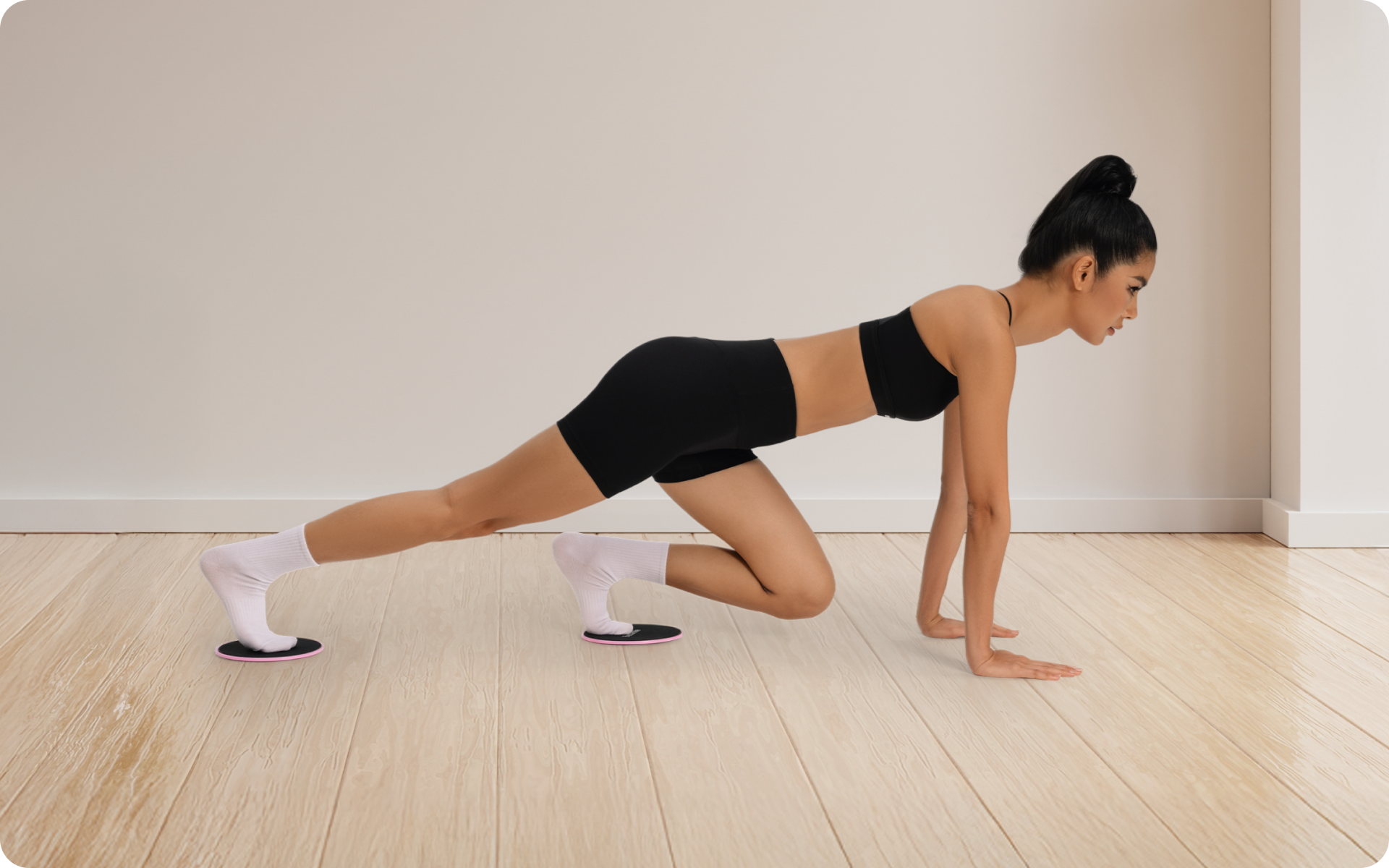The list of reasons to lift weights is long and convincing and ranges from muscle building to improved bone density. However, one benefit that is often overlooked is the significant number of calories that are burned during weightlifting.
This high-intensity exercise (HIIT) doesn’t just help you sculpt a stronger physique, it also plays a pivotal role in weight management and overall health. With each lift, push, and pull, you’re challenging your muscles and also torching calories.
But exactly how many calories are you burning? And more importantly, how can you maximize this burn? In this article, we will delve into the science behind the calories burned during weightlifting and provide practical tips on how you can ramp up your workout for maximum efficiency.
How To Calculate Calories Burned Lifting Weights
Understanding how to calculate the calories that are burned during weightlifting can help you optimize your workouts for maximum efficiency. Here, we will examine the factors that affect calorie burn and provide a step-by-step guide to calculating how many calories you burn while lifting weights.
Factors That Affect Calorie Burn in Weightlifting
Several factors influence the number of calories you burn during a weightlifting workout. These include:
- Body Weight: The more you weigh, the more energy (calories) your body requires to perform any activity, including weightlifting.
- Workout Intensity: Lifting heavier weights or increasing the number of reps you do can lead to a higher calorie burn.
- Workout Duration: Longer workouts generally burn more calories than shorter workouts, although intensity also plays a key role here.
- Metabolism: Everyone’s metabolism is different, and some people will naturally burn calories more quickly than others.
Read more: Foods That Burn Calories: Boosting Your Body’s Ability To Convert Food Into Energy.
Calculating Calories Burned Lifting Weights
The easiest way to calculate how many calories you burn lifting weights is to use a weightlifting calories burned calculator. Many such tools are available online and require you to input details such as weight, workout duration, and sometimes workout intensity.
Average Calories Burned Weight Lifting
Whether you’re following an Olympic weightlifting program or you’re just trying out weighted calisthenics, it may be useful to know how many calories you burn while lifting weights. 30 minutes of weightlifting typically burns an average of between 90-126 calories, depending on your weight. More intense weightlifting sessions can burn between 180-252 calories in the same duration (1).
Manual Calculation
If you prefer a more hands-on approach, you can calculate the calories burned from weight lifting using the MET (Metabolic Equivalent of Task) value of weightlifting, which is typically around 6 (4). Here’s the equation:
Calories Burned per Hour = MET value * weight in kg
So, if you weigh 70kg and you lift weights for an hour, you will burn approximately 420 calories (6 MET * 70kg = 420 calories).
It’s important to remember that these numbers are estimates and the actual number of weightlifting calories you burn may vary based on the aforementioned factors.
BetterMe App helps you achieve your body goals with ease and efficiency by helping to choose proper meal plans and effective workouts. Start using our app and you will see good results in a short time.
How To Maximize Your Caloric Burn While Lifting Weights
To make the most of your weightlifting sessions and increase your caloric burn, it’s essential to understand and apply certain strategies. Here are 10 unique, non-generic strategies that can help maximize your caloric burn while lifting weights.
Incorporate Compound Movements
Compound movements are exercises that engage multiple muscle groups simultaneously. These exercises can be more intense and utilize more energy than isolated movements, thereby burning more calories. For example, squats and deadlifts work the back, core, glutes, and legs simultaneously.
Incorporating more compound exercises into your routine can help you get the most out of your workout and burn more calories.
Increase Intensity With Supersets
Supersets involve doing two exercises back-to-back with minimal rest in between. This increases workout intensity, which can result in greater caloric burn. Effective supersets pair together exercises that work opposing muscle groups for a balanced workout.
Use High-Intensity Interval Training (HIIT)
HIIT involves short bursts of intense exercise followed by brief periods of rest. It is known that this form of training significantly increases caloric burn, even after the workout is over.
Implementing HIIT into your lifting routine can be as simple as adding 30-second sprint intervals on a treadmill between sets.
Lift Heavier Weights
While lighter weights with high repetitions can tone muscles, lifting heavier weights builds greater muscle mass. More muscle mass means you will have a higher resting metabolic rate, so more calories will be burned, even when you’re not exercising.
Always ensure correct form and safety when you increase weight.
Limit Rest Time Between Sets
By reducing the rest time between your sets, you can keep your heart rate up and burn more calories. You should try to keep rest periods between 30 and 60 seconds ( 6). It is important to remember that the goal is to maintain intensity, not to exhaust yourself too quickly, so working weight and intensity are both important considerations here too.
Keep Your Workouts Dynamic
Variety in your workout routine can challenge muscle groups in a different way and prevent your body from adapting to the same set of exercises. Changing up your routine on a regular basis can help increase the total number of calories you burn.
It should be noted that changing regularly doesn’t mean changing daily. For the best effect, performing foundational movement patterns consistently is vital, and this allows for supporting accessory exercises to be switched up. Ideally, you should change your routine every 4-8 weeks. However, many variables can be manipulated to support your goals (7).
Read more: Types Of Workouts For Weight Loss: Understanding The Difference For Better Results.
Utilize Isometric Movements
Isometric exercises involve holding a certain position for an extended period of time, generally 10-30 seconds (3). Examples include holding a plank or wall sit. Isometric exercises can help increase muscle endurance and joint and tendon strength by challenging the muscles in a variety of ways.
They also require less coordination than dynamic exercises, which is useful if you’re feeling fatigued.
Incorporate Plyometric Movements
Plyometric exercises involve explosive movements that help build speed and power. Examples include box jumps or squat jumps. These exercises are intense and burn a large amount of calories in a short period of time. You should always ensure proper form and safety when performing plyometric exercises.
Focus on Full-Body Workouts
Full-body workouts can burn a high number of calories as they engage all the major muscle groups. You may want to consider adding exercises such as burpees, kettlebell swings, or rowing to your routine. An ideal full-body routine should include a combination of upper- and lower-body exercises.
Utilize Unilateral Movements
Unilateral movements are exercises that require the use of one limb at a time, such as single-leg squats or lunges. These exercises can help engage core muscles and increase the stabilizing effort that is required to potentially burn more calories than regular bilaterals (exercises performed with both limbs).
It may appear easier to do bilateral exercises, but unilateral movements will help push your body harder.
Monitor Your Diet And Hydration Levels
In addition to exercise, diet and hydration play major roles in caloric burn. You should make sure you consume sufficient protein, carbohydrates, healthy fats, and fruit and vegetables while avoiding processed foods whenever possible. You should also ensure that your body is well-hydrated to maximize the benefits of your workout.
Reasons why BetterMe is a safe bet: a wide range of calorie-blasting workouts, finger-licking recipes, 24/7 support, challenges that’ll keep you on your best game, and that just scratches the surface! Start using our app and watch the magic happen.
Frequently Asked Questions
How many calories does 1 Hour of weightlifting burn?
The number of calories that are burned during one hour of weightlifting can vary based on factors such as body weight and workout intensity. However, you can expect to burn around 200-400 calories per hour on average (5).
How many calories do you burn lifting weights vs cardio?
Weightlifting and cardio both have unique benefits and can burn a significant amount of calories. On average, a 30-minute weightlifting session burns between 90 and 210 calories, depending on body weight and workout volume.
At the same time, a 30-minute cardio session burns anything from 200 to 400 calories, depending on the intensity and type of cardio you are performing (2).
How can you burn 1,000 calories a day?
Burning 1,000 calories in a day requires an incredibly high level of physical activity. This can be achieved through a combination of exercises such as running, swimming, cycling, and weightlifting.
However, you should note that the exact amount of exercise that is required is dependent on a variety of factors, such as weight, age, and fitness level.
How can I track calories burned during weightlifting?
There are several ways of tracking the number of calories burned during weightlifting. One way is to use fitness trackers or smartwatches that monitor your heart rate and estimate the number of calories burned.
There are also online calculators where you input details such as weight, the type of exercise, and duration to get an estimated calorie burn.
How many calories are burned In weightlifting?
The number of calories burned in weightlifting can range from 200-400 calories per hour, depending on various factors such as body weight, workout intensity, and metabolic rate.
How many calories are burned by weightlifting for 30 minutes?
A 30-minute weightlifting session will burn approximately 90 to 210 calories, depending on your body weight and workout intensity. For example, different barbell squat variations will result in different calorie burns due to their varying intensities.
How can I calculate calories burned from weightlifting?
You can use online calculators where you input your weight, workout duration, and type of exercise to calculate the calories burned from weightlifting. The calculator will then provide an estimate of the calories burned.
Bottom Line
Weightlifting is not just about building muscle, it also burns a significant amount of calories. By incorporating strategies such as compound movements, HIIT training, lifting heavier weights, decreasing rest time, adding cardio, and remaining consistent, you can maximize the caloric burn in your workouts.
Remember to fuel your body properly, stay hydrated, get enough sleep, and track your progress in order to get the best results.










